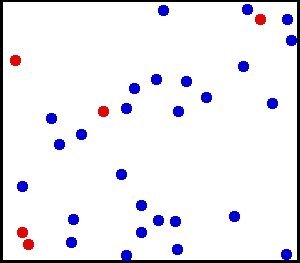 The kinetic theory of gases describes a gas as a large number of small particles (atoms or molecules), all of which are in constant, random motion. The rapidly moving particles constantly collide with each other and with the walls of the container. Kinetic theory explains macroscopic
properties of gases, such as pressure, temperature, or volume, by
considering their molecular composition and motion. Essentially, the
theory posits that pressure is due not to static repulsion between
molecules, as was Isaac Newton's conjecture, but due to collisions between molecules moving at different velocities.
The kinetic theory of gases describes a gas as a large number of small particles (atoms or molecules), all of which are in constant, random motion. The rapidly moving particles constantly collide with each other and with the walls of the container. Kinetic theory explains macroscopic
properties of gases, such as pressure, temperature, or volume, by
considering their molecular composition and motion. Essentially, the
theory posits that pressure is due not to static repulsion between
molecules, as was Isaac Newton's conjecture, but due to collisions between molecules moving at different velocities.
While the particles making up a gas are too small to be visible, the
jittering motion of pollen grains or dust particles which can be seen
under a microscope, known as Brownian motion, results directly from collisions between the particle and gas molecules. As pointed out by Albert Einstein
in 1905, this experimental evidence for kinetic theory is generally
seen as having confirmed the existence of atoms and molecules.

No comments:
Post a Comment
Your Comment is posted.